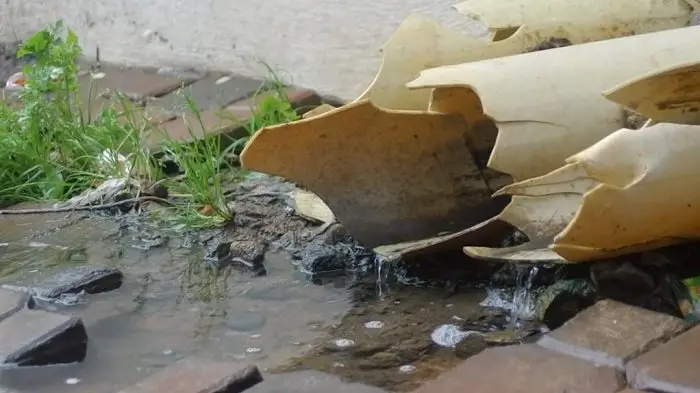Water losses in South Africa are due to water being lost through leaking pipes and dripping taps which stands at 20% of the municipality’s total water supply, says South African Institution of Civil Engineering president Dr Chris Herold.
The Department of Water and Sanitation recently released reserve water from the Sterkfontein dam into the nearly empty Vaal dam to try and boost its capacity coming at a time of ongoing drought in the country over the past two-and-a-half years, the Water shedding was also implemented recently in the Ekurhuleni municipality in an emergency effort to try and save water.
In light of this, Herold said it was inevitable that South Africa reduces its total water consumption by 15% by implementing the water demand management to cut on water loss as a result of leaks.
He said municipalities were given a 15% consumption reduction target two decades ago, and that, to date, nothing had been achieved in terms of the reduction target, with nonrevenue water consumption actually having increased in some municipalities.
“The cumulative loss since before the drought started until now, amounts to 1.1-billion cubic meters of water through leakage,” he said, adding that 610-million cubic metres of water had been lost as a direct result of the drought, while the rest could be attributed to depressed dam storage caused by losses incurred in the two years preceding the drought.
Herold further noted that, if water restrictions had been imposed earlier, it would have made a difference to the current water shortage crisis facing the country.
He hinted that the two-and-half-month delay in promulgating the water restrictions may have been influenced by the municipal elections.
“Municipalities have not achieved 15% water reductions, leaving Rand Water little option than to forcibly restrict the supply to municipal reservoirs to achieve it,” he said.
Herold stated that restricting water supply at night could significantly impact on water losses, as is being tried by the Ekurhuleni municipality.
“However, one of the problems with this is that if you switch water off, the pipe runs empty and potentially contaminated saturated soil around the pipes starts leaking back into the pipe through holes,” he said.
Herold added that there was even a threat of cross-contamination from raw sewage, as sewer pipes also had a tendency to leak.
He noted that, if the demand for water exceeded the supply of water, the effects of the water crisis could be more severe and last longer.
“If the drought continues until 2022, as could be expected based on major droughts in the 1930s and 1980s, and if municipalities don’t achieve the reduction target within the remaining six years, we would have cumulatively lost twice the storage of Vaal dam.
This means we would have to reduce our demands by two years’ worth of water,” said Herold.
To mitigate this, he stated that a high priority for municipalities should be to repair defective pumps in the system. However, this would take time to achieve.
“Reducing water wastage will achieve much quicker results and upskilling people to fix basic water issues for free will be more than paid for by reduced water purchases.
It is also imperative to revitalise technical capacity and moribund structures in the public sector and expedite the implementation of water restrictions, while curtailing illegal irrigation,” he said

